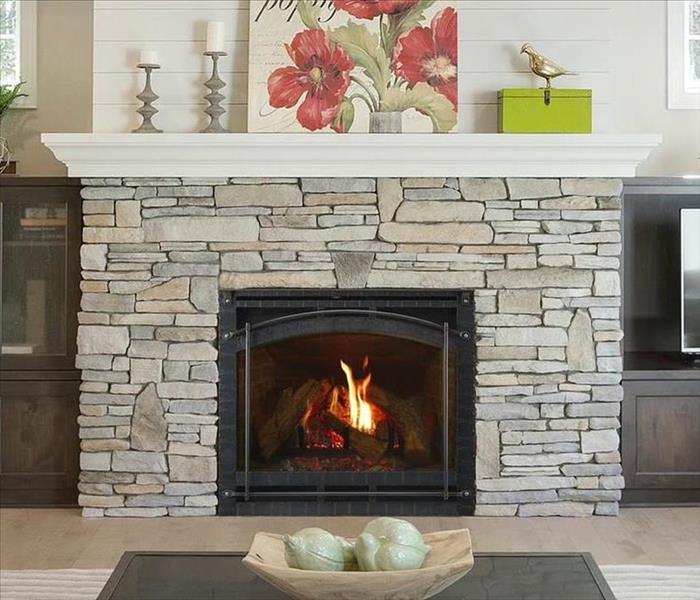Fire Place Maintenance
2/24/2020 (Permalink)
When your home has a fireplace, there is a lot of responsibility in maintaining it. Before you use it, make sure it is in good working order, and cleaned out properly. If it’s not maintained regularly, it could cause a structure fire, smoke could puff back in the house, or it could cause carbon monoxide poisoning. We’ll provide a few easy steps to take to make sure your fireplace is safe.
- Your chimney should be swept inside at least once a year, and it should be at the beginning of the year. By sweeping the chimney, it will help remove soot and debris. When you’re sweeping you should look for any animals that may have crawled in and died.
- Before you start the fire, check the structure of your chimney. You want to make sure there are no cracks, loose bricks, or missing mortar. Also look for any deterioration. Cracks and spalling are signs of deterioration.
- Use a wire-mesh cap on top of the chimney to keep the birds, squirrels, rain and other debris from entering.
- Check the damper; the damper is a movable plate that sits above the fireplace before the flue. Make sure the damper is working properly. There should be no debris preventing it from opening and closing.
- When cleaning the chimney, you want to keep an eye out for creosote buildup. Creosote is a chemical mass of carbon formed when wood, tar or fossil fuels are burned. Even though you can’t see it from the outside doesn’t mean that the buildup is not on the inside. When it’s not properly removed, it can build up in the flue and chimney, potentially causing a chimney fire.
- Make sure there isn’t anything hanging over the chimney, such as tree limbs, flags, etc. They could be a fire hazard, and it could interfere with proper draft airflow.
- Clean out ashes regularly. You should clean out the ashes from the last time you ran your fireplace. You can simply sweep or vacuum the cold ashes and dispose of them. Be aware that there could be hot coals in the mix. Hot coals can stay hot for up to 3 days.
If you don’t have experience in cleaning or maintaining your fireplace or know what to look for, call a local professional. They have the tools and resources to make sure that your chimney is up and running safely for the winter time.




 24/7 Emergency Service
24/7 Emergency Service
